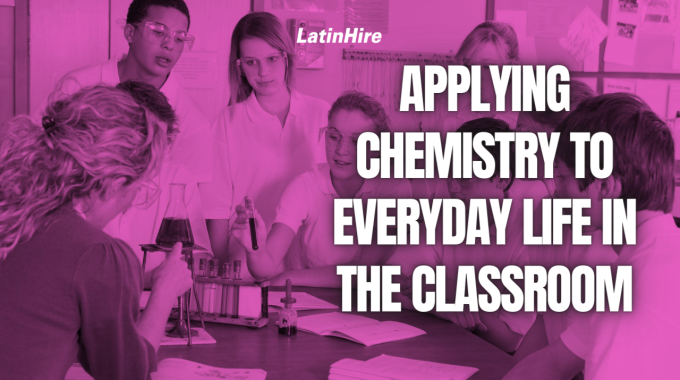Organic chemistry is the study of compounds that contain carbon. These compounds form the basis…

Applying Chemistry to Everyday Life in the Classroom
Chemistry is all around us, from the air we breathe to the water we drink. Yet, for many students, the subject remains confined to the walls of the classroom, perceived as a dry and abstract discipline.
As chemistry teachers and tutors, it is our responsibility to bridge this gap and bring the excitement of chemistry to students’ daily lives. By demonstrating the real-world applications of chemistry, we can ignite their curiosity and make our classes more engaging and memorable.
In this post, we’ll explore some practical ways to apply chemistry to everyday life, transforming the classroom experience into a fun and exciting journey of discovery.
1) Chemistry in the Kitchen
The kitchen serves as a fascinating laboratory of chemical reactions. From the browning of toast, aka. the Maillard reaction, to the bubbling of baking soda in a cake, an acid-base reaction, everyday cooking processes provide excellent opportunities to discuss chemical reactions and their importance in our lives.
Conducting experiments, such as making homemade ice cream using salt and ice (endothermic reaction), or just experimenting with kitchen ingredients like combining baking soda and vinegar can demonstrate the role of chemistry in food preparation.
2) Environmental Chemistry

The study of environmental chemistry opens the door to critical discussions about global issues like climate change, pollution, and sustainability. Engage students by discussing topics such as greenhouse gases, acid rain, or water purification methods.
Conduct experiments to simulate the effects of pollution or analyze water samples for contaminants. Encouraging students to brainstorm eco-friendly solutions can foster a sense of responsibility towards the environment.
3) Consumer Products and Chemistry
Explore the chemistry behind everyday consumer products, such as cleaning agents, cosmetics, and personal care items. Unveil the chemical ingredients and their functions, emphasizing the importance of safety and understanding product labels.
Demonstrate chemical reactions like the oxidation of fruits or the cleaning power of vinegar, allowing students to witness chemistry at work in their daily lives.
4) Chemistry in Health and Medicine

Chemistry plays a vital role in the field of medicine and human health. Relate chemistry to medicine by discussing drug development, the interactions between chemicals and the human body, and the role of pH in maintaining physiological balance.
Delve into topics such as nutrition and metabolism, exploring chemical reactions that occur during digestion. Simulate laboratory tests to show the diagnostic power of chemical reactions in healthcare.
5) Forensic Chemistry
Feed students’ curiosity with intriguing forensic chemistry examples. Discuss the chemical analysis of crime scene evidence, such as fingerprint detection using powders or DNA profiling techniques.
Engage them in problem-solving scenarios, where they must use their knowledge of chemical reactions to solve mysteries and uncover the truth.
6) Everyday Chemistry Challenges

Assign chemistry-related challenges that students attempt outside the classroom. For example, ask them to identify common household chemicals and their properties or to observe chemical changes in their surroundings.
Encourage students to document their findings and present them in class, fostering a sense of scientific exploration and discovery.
How else can we apply chemistry in the classroom to the real world? Share them in the comments below!



